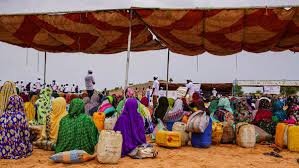Inside BENEO’s new pulse plant: pioneering sustainable protein from faba beans
FAO, WFP and UNICEF urge immediate humanitarian access and action to avert what could become the worst hunger crisis in recent history
Four months after famine was first confirmed in Zamzam camp in Sudan’s North Darfur state, more areas in North Darfur and the Western Nuba mountains have been identified as experiencing famine conditions, as access to food and nutrition for millions of people across the country continues to deteriorate, the Food and Agriculture Organization of the United Nations (FAO,) World Food Programme (WFP) and UNICEF warned.
The latest Famine Review Committee (FRC) report and new projections from the Integrated Food Security Phase Classification (IPC) identify famine with reliable data in at least five areas of Sudan – Zamzam, Abu Shouk and Al Salam camps in North Darfur, and in the Western Nuba Mountains for both residents and internally displaced persons (IDPs). Famine is projected in five additional areas between December 2024 and May 2025 – Um Kadadah, Melit, El Fasher, At Tawisha and Al Lait in North Darfur. The report also highlights the risk of famine across 17 more areas during the same period.
More than 24.6 million people across Sudan—more than half of the population analysed—are now experiencing high levels of acute food insecurity (IPC Phase 3 or above.) This includes 8.1 million in Emergency conditions (IPC Phase 4) and at least 638,000 people in IPC Phase 5 (Catastrophe.)
These findings mark an alarming escalation of hunger and malnutrition during what is typically the harvest season when food availability should be at its highest. The FRC’s classification of increasing hunger in such a season indicates that the harvest is not reaching everywhere given the continued conflict that limits markets and movement of goods. Without immediate, unhindered humanitarian access and urgent international support, famine risks spreading further in 2025, threatening the lives of millions of people, mainly children, and exacerbating what is already one of the world’s most severe food crises.

